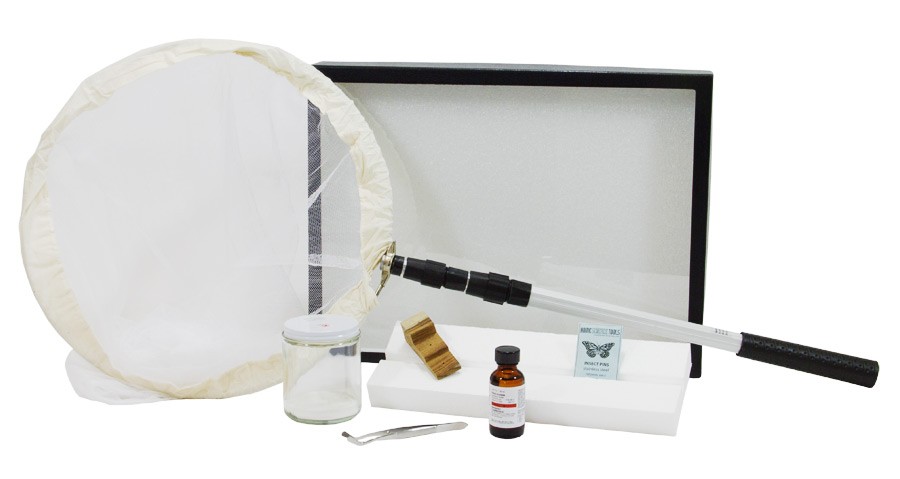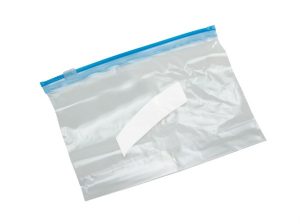
Bug collection tools
The information available for novice bug enthusiasts who are interested in starting an insect collection can be quite overwhelming. However, there are many easy ways of getting past the beginner phase. Here’s a list of some of the best tools to help you get started.
- Insect Pins
Insect pins can be found in a wide range of sizes, with the thickness increasing as the number goes up. The thinner the pin, the easier it is to pierce large or hard bodied insects, and it’s less likely to damage delicate or small insects. For very large bugs, a longer pin may be used. And for long term use it’s recommended that you purchase stainless steel pins to resist corrosion that may occur due to long term exposure to humidity. Black enamel treated pins are excellent for this purpose.
- Pinning Block
Pinning blocks allow for the easy collection of insects, points and labels and onto a pin with minimal bending and damage. Trying to force a pin through an insect or label on a soft surface such as Styrofoam or with your fingers can generate uneven pressure and cause damages.A three step pinning block provides an estimate of the height placement of the labels and insects, which will help make the standardized collection easy.
- Insect Box
An insect box is a safe and secure place to display and store insects. There are many affordable chipboard boxes on the market that are light-weight and sturdy, making them ideal for a variety of purposes. Cabinet drawers and wooden Schmidt boxes are the more expensive types which can assist with your collection by separating destructive pests like ants and dermestids, which may damage or feed on specimens. A cheaper alternative is to place a collection box in the refrigerator and use it to eliminate insect pests.
- Spreading Board
Spreading boards are great for collecting lepidopterans(moths and butterflies) or to display the diagnostic or attractive wing pattern of any insect. These boards are inexpensive, easy to find, and are effective in accommodating wing spreading of a variety of different insects. The only other supplies needed are strips of papers and pins.
- Ziploc bags and Large Jars

Ziploc bag
Don’t’ discard old food containers such as stick Ziploc baggies as these are great gathering vessels. Use a large flat Tupperware to heap lepidopterans between sheets of wax paper.
Useful Items to Boost your Collection Kit
Net Bag: A net bag can be used for stinging or catching flying insects, sweeping, and even skimming for aquatic in ponds and beating trees insects.
Kill Jars: A kill jar is suitable for field collecting as it allows one to combine collected insects into the selected container without worrying about predation, escapes, and damages.
Snap Cap Tubes: These are inexpensive and great for holding all types of bugs. It’s suitable for use with an aspirator and small enough to fit in a pocket. You can carry snap cap tubes in your wallet for emergency insect-catching opportunities.
Glass Vials: These preserve arachnids and soft bodied insects in ethanol. Scientifically speaking, it also allows one to refer to something as “pooter”.
Adjustable spreading board: These provide maximum utility at an affordable price. They can easily fit everything from tiny ant queens to giant Polyphemus moths.
All efforts are being made to standardize the collection of insects to preserve the different colonies worldwide for the purpose of future scientific studies. These preserved specimens are useful in studies of genetics, distribution and abundance, and taxonomy. Knowing how to preserve an insect, where to pin it, and how to provide fitting information is very important. Well-pinned insects will improve the quality of a collection, and make your specimens more attractive to other scientists or collectors who may be interested in swapping specimens.
Without the proper knowledge of insects, no insect collection would be complete. A good insect guide is the Kaufman field guide, which includes interesting and useful life history information and clear illustrations. There are also many online sources with tons of pictures and options to submit pictures for identification. The bug world is wide, and there are a plethora of information available to help Entomologists strive in their endeavors.

No Comments